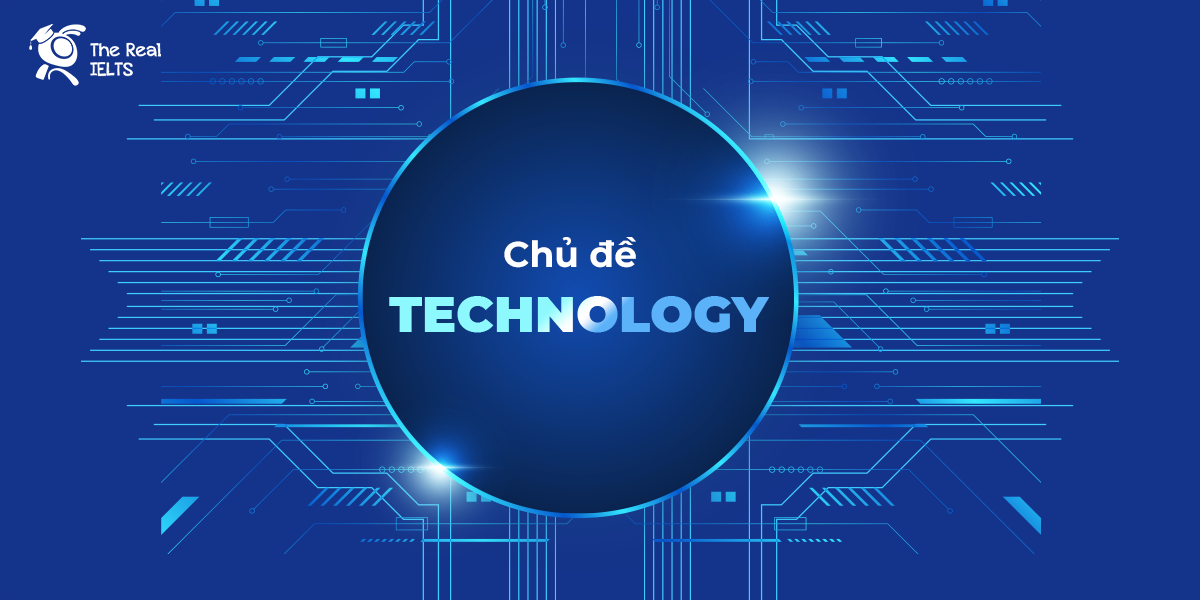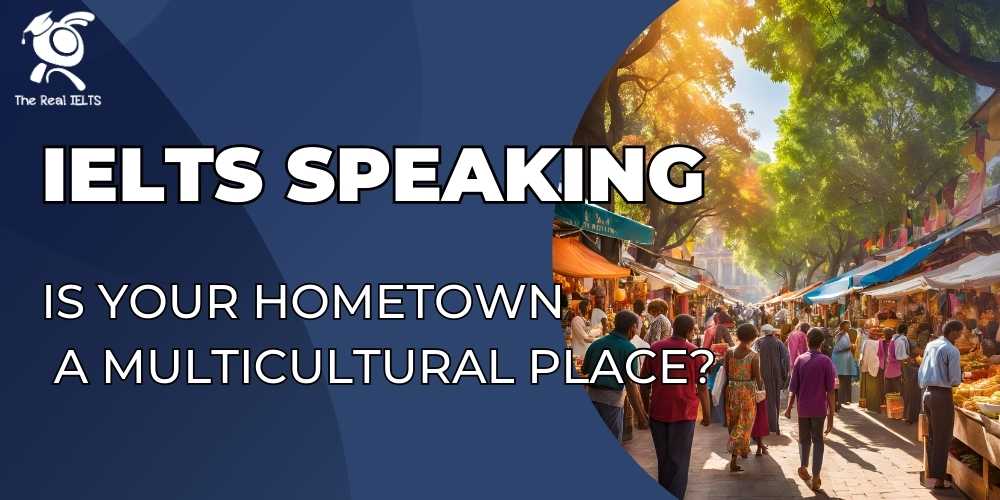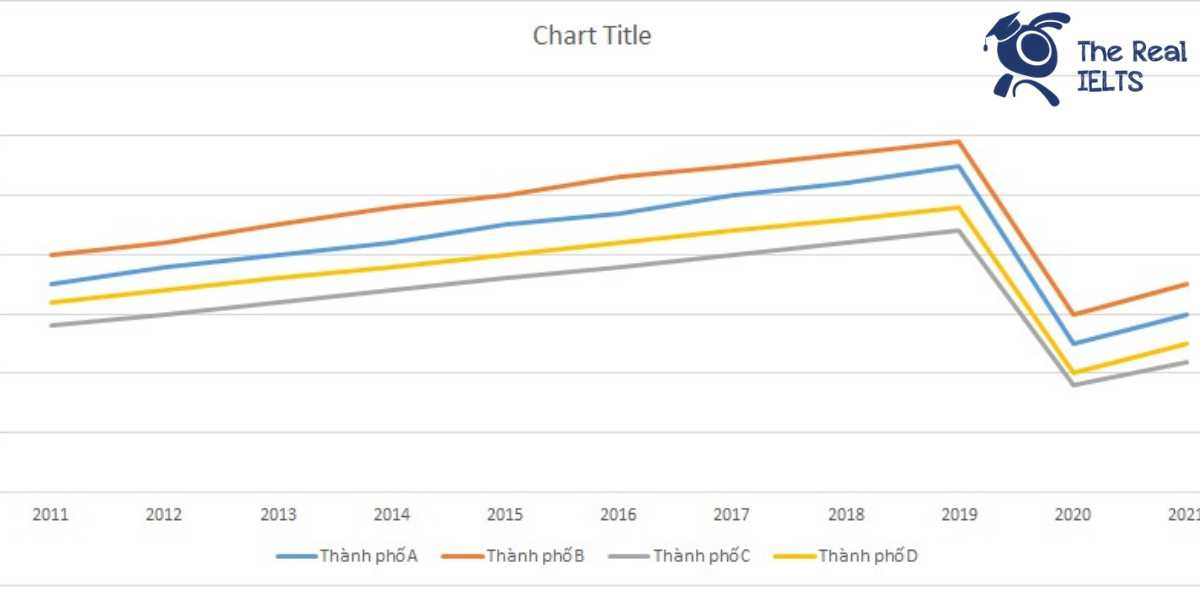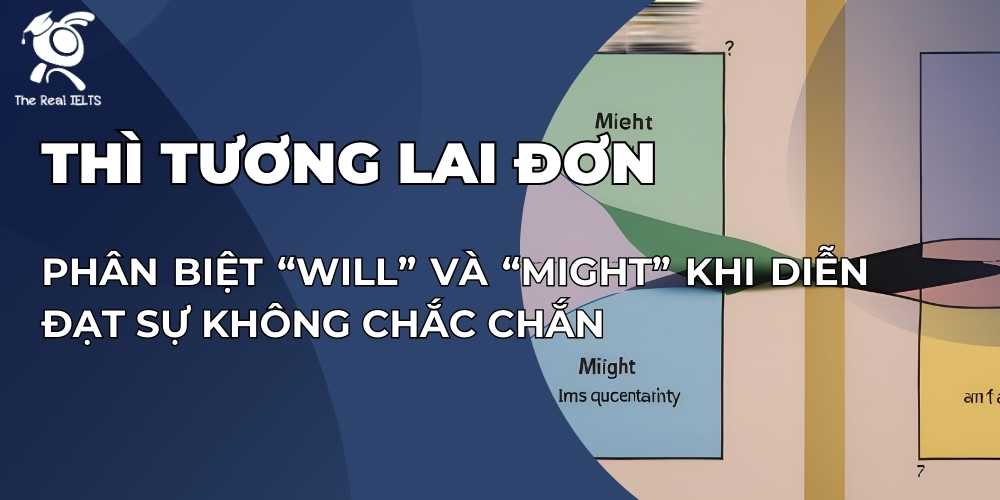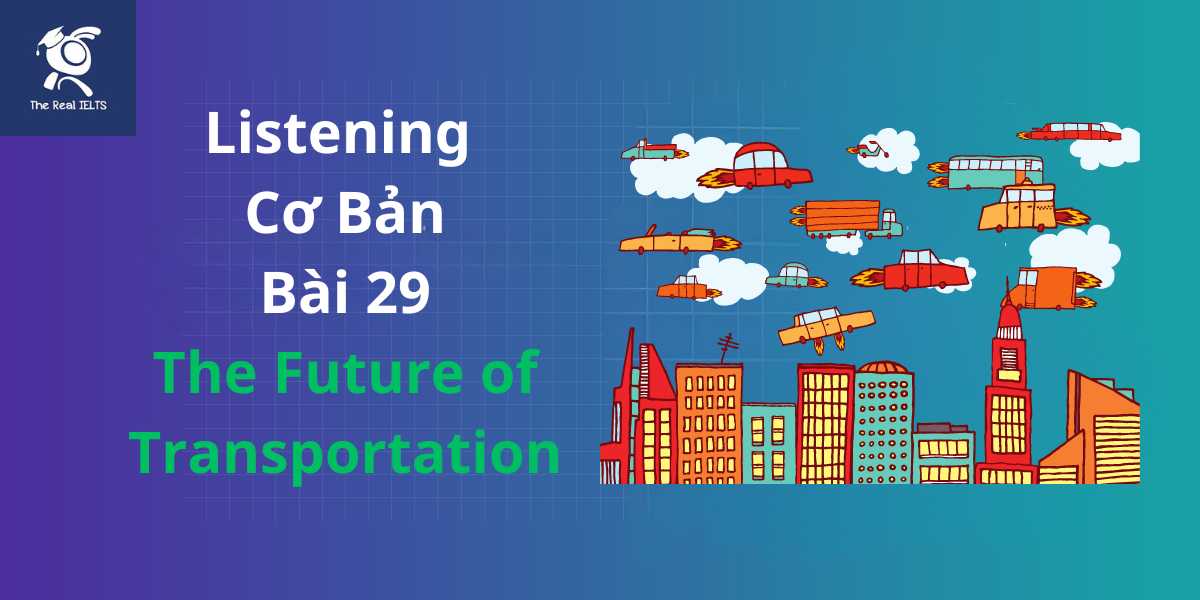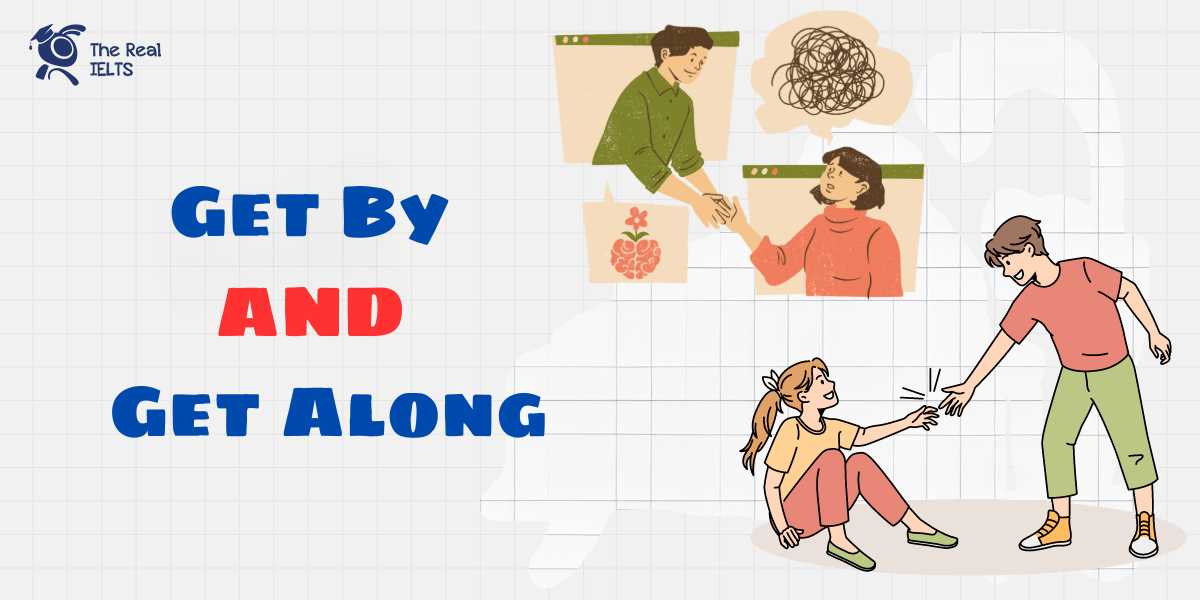Từ vựng chủ đề TECHNOLOGY thuộc dòng từ vựng luôn luôn có khả năng cao xuất hiện nhiều trong kỳ thi IELTS, đây là bài viết soạn ra 100 từ hay dùng nhất sử dụng cho kỳ thì IELTS. Sau đây là phần thống kê, câu ví dụ và dịch nghĩa.
Đọc thêm: 20 chủ đề luyện Reading và từ vựng để thi IELTS.
Từ vựng chủ đề TECHNOLOGY
| Technology | Công nghệ | The rapid evolution of technology has transformed the way we live and work. | Sự tiến triển nhanh chóng của công nghệ đã biến đổi cách chúng ta sống và làm việc. |
| Innovation | Đổi mới | Companies strive for continuous innovation to stay ahead in the competitive market. | Các công ty nỗ lực để đổi mới liên tục để dẫn đầu trong thị trường cạnh tranh. |
| Digital | Kỹ thuật số | The shift to digital platforms has revolutionized communication and information access. | Sự chuyển đổi sang các nền tảng số đã cách mạng hóa giao tiếp và truy cập thông tin. |
| Automation | Tự động hóa | The manufacturing industry increasingly relies on automation for efficiency and precision. | Ngành công nghiệp sản xuất ngày càng phụ thuộc nhiều hơn vào tự động hóa để tăng hiệu suất và độ chính xác. |
| Artificial intelligence | Trí tuệ nhân tạo | AI is revolutionizing various sectors, from healthcare to finance, with its ability to analyze data and make intelligent decisions. | Trí tuệ nhân tạo đang cách mạng hóa các lĩnh vực khác nhau, từ y tế đến tài chính, với khả năng phân tích dữ liệu và ra quyết định thông minh. |
| Robotics | Robot | Robotics plays a crucial role in manufacturing, healthcare, and even exploration in challenging environments. | Robot học chơi một vai trò quan trọng trong sản xuất, chăm sóc sức khỏe, và thậm chí là khám phá trong môi trường khó khăn. |
| Internet of Things (IoT) | Internet of Things (IoT) | The IoT connects devices and systems, enabling seamless communication and data exchange. | IoT kết nối các thiết bị và hệ thống, cho phép giao tiếp mượt mà và trao đổi dữ liệu. |
| Virtual reality | Thực tế ảo | VR technology provides immersive experiences, from gaming to training simulations. | Công nghệ thực tại ảo cung cấp trải nghiệm sâu sắc, từ trò chơi đến mô phỏng đào tạo. |
| Augmented reality | Thực tế ảo tăng cường | AR overlays digital information onto the real world, enhancing our perception and interaction. | AR chồng lớp thông tin kỹ thuật số lên thế giới thực, cải thiện sự nhận thức và tương tác của chúng ta. |
| Cybersecurity | Bảo mật mạng | In an age of digital threats, cybersecurity is essential to protect sensitive information and systems. | Trong thời đại đe dọa kỹ thuật số, an ninh mạng là rất quan trọng để bảo vệ thông tin nhạy cảm và hệ thống. |
| Cloud computing | Điện toán đám mây | Cloud services enable convenient storage and access to data from anywhere with an internet connection. | Dịch vụ đám mây cho phép lưu trữ và truy cập dữ liệu thuận tiện từ bất kỳ nơi nào có kết nối internet. |
| Big data | Dữ liệu lớn | Big data analytics helps organizations extract valuable insights from vast amounts of information. | Phân tích dữ liệu lớn giúp tổ chức rút ra thông tin quý giá từ lượng thông tin lớn. |
| Machine learning | Học máy | Machine learning algorithms allow systems to learn and improve from experience without explicit programming. | Các thuật toán học máy cho phép các hệ thống học và cải thiện từ kinh nghiệm mà không cần lập trình rõ ràng. |
| 5G | 5G | The rollout of 5G networks promises faster and more reliable wireless communication. | Việc triển khai các mạng 5G hứa hẹn truyền thông không dây nhanh hơn và đáng tin cậy hơn. |
| Wireless | Không dây | Wireless technology has untethered us from traditional connectivity constraints. | Công nghệ không dây đã giải phóng chúng ta khỏi các ràng buộc kết nối truyền thống. |
| Smartphones | Điện thoại thông minh | Smartphones have become indispensable, providing communication, entertainment, and productivity tools in one device. | Điện thoại thông minh đã trở thành không thể thiếu, cung cấp các công cụ giao tiếp, giải trí và sản xuất trên một thiết bị. |
| Tablets | Máy tính bảng | Tablets offer portable computing power, bridging the gap between smartphones and laptops. | Máy tính bảng cung cấp sức mạnh tính toán di động, chắp nối khoảng cách giữa điện thoại thông minh và máy tính xách tay. |
| Laptops | Laptop | Laptops provide flexibility and mobility for work and entertainment. | Máy tính xách tay cung cấp tính linh hoạt và di động cho công việc và giải trí. |
| Wearables | Thiết bị đeo | Wearable devices, like smartwatches and fitness trackers, monitor health and enhance connectivity. | Thiết bị đeo có thể đo lường sức khỏe và tăng cường kết nối. |
| Gadgets | Gadgets | Tech gadgets encompass a wide range of devices designed to make life more convenient and enjoyable. | Các công cụ công nghệ bao gồm một loạt các thiết bị được thiết kế để làm cuộc sống trở nên thuận tiện và thú vị. |
| Software | Phần mềm | Software applications enable users to perform various tasks on computers and devices. | Ứng dụng phần mềm cho phép người dùng thực hiện các nhiệm vụ khác nhau trên máy tính và thiết bị. |
| Hardware | Phần cứng | Hardware components are the physical parts of a computer or electronic device. | Các thành phần phần cứng là các bộ phận vật lý của máy tính hoặc thiết bị điện tử. |
| Firmware | Firmware | Firmware is specialized software embedded in hardware, providing low-level control for specific functions. | Firmware là phần mềm chuyên biệt được nhúng trong phần cứng, cung cấp kiểm soát ở mức độ thấp cho các chức năng cụ thể. |
| Operating system | Hệ điều hành | The operating system is the software that manages hardware and other software on a computer. | Hệ điều hành là phần mềm quản lý phần cứng và phần mềm khác trên máy tính. |
| Algorithm | Thuật toán | Algorithms are step-by-step procedures or formulas for solving specific problems or accomplishing tasks. | Thuật toán là các quy trình từng bước hoặc công thức để giải quyết các vấn đề cụ thể hoặc hoàn thành các nhiệm vụ. |
| Code | Mã nguồn | Writing code is the process of creating instructions for a computer to execute. | Viết mã là quá trình tạo ra các hướng dẫn để máy tính thực hiện. |
| Programming | Lập trình | Programming involves writing and testing code to create software applications. | Lập trình bao gồm việc viết và kiểm tra mã để tạo ra các ứng dụng phần mềm. |
| Coding | Lập trình | Coding is the act of converting human-readable instructions into a language that computers can understand. | Lập trình là hành động chuyển đổi các hướng dẫn có thể đọc được của con người thành một ngôn ngữ mà máy tính có thể hiểu được. |
| Developer | Nhà phát triển | A developer is a person who designs, creates, and maintains software applications. | Một nhà phát triển là một người thiết kế, tạo ra và duy trì các ứng dụng phần mềm. |
| User interface (UI) | Giao diện người dùng (UI) | UI design focuses on creating visually appealing and user-friendly interfaces for software applications. | Thiết kế giao diện người dùng tập trung vào việc tạo ra giao diện hấp dẫn mắt và dễ sử dụng cho các ứng dụng phần mềm. |
| User experience (UX) | Trải nghiệm người dùng (UX) | UX design aims to enhance the overall experience users have while interacting with a product or system. | Thiết kế trải nghiệm người dùng nhằm cải thiện trải nghiệm tổng thể của người dùng khi tương tác với một sản phẩm hoặc hệ thống. |
| Interface | Giao diện | An interface is a point where two systems or subjects meet and interact with each other. | Giao diện là điểm mà hai hệ thống hoặc chủ thể gặp nhau và tương tác với nhau. |
| Platform | Nền tảng | A platform is a foundation or base upon which software applications or services run. | Một nền tảng là một nền tảng hoặc cơ sở trên đó các ứng dụng phần mềm hoặc dịch vụ chạy. |
| App | Ứng dụng | Short for application, an app is a software program designed for a specific purpose. | Viết tắt của ứng dụng, một ứng dụng là một chương trình phần mềm được thiết kế cho một mục đích cụ thể. |
| Website | Trang web | A website is a collection of web pages accessible on the internet. | Một trang web là một bộ sưu tập các trang web có thể truy cập trên internet. |
| Social media | Mạng xã hội | Social media platforms facilitate online communication and networking among users. | Các nền tảng truyền thông xã hội hỗ trợ giao tiếp và kết nối trực tuyến giữa người dùng. |
| Networking | Mạng lưới | Networking involves connecting computers or devices to share resources and information. | Mạng lưới liên kết các máy tính hoặc thiết bị để chia sẻ tài nguyên và thông tin. |
| Servers | Máy chủ | Servers are powerful computers that store and manage network resources. | Máy chủ là các máy tính mạnh mẽ lưu trữ và quản lý các tài nguyên mạng. |
| Data center | Trung tâm dữ liệu | A data center is a facility that houses computer systems and related components for data storage and processing. | Trung tâm dữ liệu là một cơ sở dữ liệu chứa hệ thống máy tính và các thành phần liên quan để lưu trữ và xử lý dữ liệu. |
| Connectivity | Kết nối | Connectivity refers to the ability of devices to connect and communicate with each other. | Kết nối đề cập đến khả năng của các thiết bị để kết nối và giao tiếp với nhau. |
| Internet | Internet | The internet is a global network connecting millions of devices and users worldwide. | Internet là một mạng lưới toàn cầu kết nối hàng triệu thiết bị và người dùng trên toàn thế giới. |
| Browser | Trình duyệt | A browser is a software application used to access and view information on the internet. | Trình duyệt là một ứng dụng phần mềm được sử dụng để truy cập và xem thông tin trên internet. |
| Search engine | Công cụ tìm kiếm | Search engines help users find information on the internet by indexing and ranking web pages. | Công cụ tìm kiếm giúp người dùng tìm thông tin trên internet bằng cách lập chỉ mục và xếp hạng các trang web. |
| E-commerce | Thương mại điện tử | E-commerce involves buying and selling goods and services online. | Thương mại điện tử bao gồm việc mua bán hàng hóa và dịch vụ trực tuyến. |
| Online shopping | Mua sắm trực tuyến | Online shopping allows consumers to browse and purchase products over the internet. | Mua sắm trực tuyến cho phép người tiêu dùng duyệt và mua các sản phẩm trên internet. |
| Digital marketing | Tiếp thị số | Digital marketing utilizes online channels to promote products and services. | Marketing kỹ thuật số sử dụng các kênh trực tuyến để quảng bá sản phẩm và dịch vụ. |
| Social networking | Mạng xã hội | Social networking platforms connect individuals and communities online. | Các nền tảng mạng xã hội kết nối cá nhân và cộng đồng trực tuyến. |
| Streaming | Truyền hình trực tuyến | Streaming services deliver audio or video content in real-time over the internet. | Dịch vụ phát trực tuyến cung cấp nội dung âm thanh hoặc video theo thời gian thực qua internet. |
| Gaming | Chơi game | Gaming involves playing electronic games for entertainment or competition. | Chơi game bao gồm chơi trò chơi điện tử để giải trí hoặc cạnh tranh. |
| Virtual currency | Tiền ảo | Virtual currency, like cryptocurrencies, is digital or electronic money. | Tiền ảo, như tiền điện tử, là tiền điện tử hoặc điện tử. |
| Bitcoin | Bitcoin | Bitcoin is a decentralized digital currency, operating on a blockchain. | Bitcoin là một loại tiền điện tử phi tập trung, hoạt động trên một blockchain. |
| Cryptocurrency | Tiền điện tử | Cryptocurrency is a type of digital or virtual currency that uses cryptography for security. | Tiền điện tử là một loại tiền điện tử hoặc ảo sử dụng mật mã để bảo mật. |
| Blockchain | Blockchain | Blockchain is a decentralized and secure digital ledger used for recording transactions. | Blockchain là một sổ cái điện tử phi tập trung và an toàn được sử dụng để ghi lại các giao dịch. |
| E-waste | Rác điện tử | E-waste refers to electronic waste, such as discarded computers and mobile phones. | Rác điện tử đề cập đến các sản phẩm rác điện tử, chẳng hạn như máy tính và điện thoại di động bị vứt bỏ. |
| Renewable energy | Năng lượng tái tạo | Renewable energy sources, like solar and wind power, are sustainable alternatives to traditional energy. | Các nguồn năng lượng tái tạo, như năng lượng mặt trời và gió, là các lựa chọn bền vững thay thế cho năng lượng truyền thống. |
| Solar power | Năng lượng mặt trời | Solar power harnesses energy from the sun to generate electricity. | Năng lượng mặt trời tận dụng năng lượng từ mặt trời để tạo ra điện. |
| Wind energy | Năng lượng gió | Wind energy converts the kinetic energy of the wind into electricity. | Năng lượng gió chuyển đổi năng lượng động của gió thành điện năng. |
| Green technology | Công nghệ xanh | Green technology focuses on developing environmentally friendly solutions. | Công nghệ xanh tập trung vào việc phát triển các giải pháp thân thiện với môi trường. |
| Sustainable | Bền vững | Sustainable technologies aim to meet present needs without compromising future generations. | Công nghệ bền vững nhằm đáp ứng các nhu cầu hiện tại mà không ảnh hưởng đến thế hệ tương lai. |
| Biotechnology | Công nghệ sinh học | Biotechnology uses biological processes to develop products and technologies. | Công nghệ sinh học sử dụng các quy trình sinh học để phát triển sản phẩm và công nghệ. |
| Nanotechnology | Công nghệ nano | Nanotechnology involves manipulating materials at the molecular or atomic level. | Công nghệ nano liên quan đến việc thao tác vật liệu ở mức độ phân tử hoặc nguyên tử. |
| 3D printing | In 3D | 3D printing creates three-dimensional objects layer by layer from digital models. | In 3D tạo ra các đối tượng ba chiều lớp qua lớp từ các mô hình kỹ thuật số. |
| Quantum computing | Tính toán lượng tử | Quantum computing leverages the principles of quantum mechanics for faster data processing. | Tính toán lượng tử sử dụng các nguyên tắc của cơ học lượng tử để xử lý dữ liệu nhanh hơn. |
| Autonomous vehicles | Xe tự lái | Autonomous vehicles can operate without human intervention, using sensors and AI. | Xe tự hành có thể hoạt động mà không cần sự can thiệp của con người, sử dụng cảm biến và trí tuệ nhân tạo. |
| Drones | Drone | Drones, or unmanned aerial vehicles, are used for various purposes, including aerial photography and surveillance. | Máy bay không người lái, hoặc thiết bị bay không người lái, được sử dụng cho các mục đích khác nhau, bao gồm chụp ảnh từ trên cao và giám sát. |
| Smart homes | Nhà thông minh | Smart home technology enables automation and control of household devices. | Công nghệ nhà thông minh cho phép tự động hóa và kiểm soát các thiết bị trong nhà. |
| Smart cities | Thành phố thông minh | Smart cities leverage technology to enhance urban living and sustainability. | Thành phố thông minh tận dụng công nghệ để cải thiện cuộc sống và tính bền vững của đô thị. |
| IoT devices | Thiết bị IoT | IoT devices connect and share data to improve efficiency and convenience. | Các thiết bị IoT kết nối và chia sẻ dữ liệu để cải thiện hiệu suất và tiện ích. |
| Remote control | Điều khiển từ xa | Remote control devices allow users to operate equipment from a distance. | Các thiết bị điều khiển từ xa cho phép người dùng vận hành thiết bị từ xa. |
| GPS | GPS | GPS technology provides accurate location information using satellites. | Công nghệ GPS cung cấp thông tin vị trí chính xác bằng cách sử dụng các vệ tinh. |
| Satellite | Vệ tinh | Satellites orbit the Earth, enabling communication, navigation, and remote sensing. | Các vệ tinh quay quanh Trái Đất, cho phép liên lạc, định vị và cảm biến từ xa. |
| Aerospace | Hàng không vũ trụ | Aerospace technology encompasses the design and development of aircraft and spacecraft. | Công nghệ hàng không vũ trụ bao gồm thiết kế và phát triển các máy bay và tàu vũ trụ. |
| Biometrics | Sinh trắc học | Biometric authentication uses unique physical or behavioral characteristics for identity verification. | Xác thực sinh trắc học sử dụng các đặc điểm vật lý hoặc hành vi duy nhất để xác minh danh tính. |
| Facial recognition | Nhận dạng khuôn mặt | Facial recognition technology identifies individuals based on facial features. | Công nghệ nhận dạng khuôn mặt nhận dạng cá nhân dựa trên đặc điểm khuôn mặt. |
| Voice recognition | Nhận dạng giọng nói | Voice recognition systems interpret and respond to spoken words. | Hệ thống nhận dạng giọng nói hiểu và phản ứng với từ ngữ nói. |
| Password | Mật khẩu | Passwords are used for secure access to digital accounts and devices. | Mật khẩu được sử dụng để truy cập an toàn vào tài khoản và thiết bị kỹ thuật số. |
| Encryption | Mã hóa | Encryption secures data by converting it into a code that can only be deciphered with the right key. | Mã hóa bảo mật dữ liệu bằng cách chuyển đổi nó thành một mã chỉ có thể được giải mã với chìa khóa đúng. |
| Malware | Phần mềm độc hại | Malware is malicious software designed to harm or exploit computer systems. | Phần mềm độc hại là phần mềm độc hại được thiết kế để gây hại hoặc lợi dụng hệ thống máy tính. |
| Virus | Virus | A computer virus is a type of malware that spreads and infects other files. | Một virus máy tính là một loại phần mềm độc hại lan truyền và lây nhiễm các tập tin khác. |
| Firewall | Tường lửa | A firewall protects computer networks by monitoring and controlling incoming and outgoing network traffic. | Một tường lửa bảo vệ mạng máy tính bằng cách giám sát và kiểm soát lưu lượng mạng đi vào và ra khỏi. |
| Data breach | Rò rỉ dữ liệu | A data breach is an unauthorized access to sensitive information. | Sự vi phạm dữ liệu là việc truy cập thông tin nhạy cảm mà không được ủy quyền. |
| Privacy | Quyền riêng tư | Privacy concerns the protection of personal information from unauthorized access. | Quan tâm về quyền riêng tư liên quan đến việc bảo vệ thông tin cá nhân khỏi việc truy cập trái phép. |
| Surveillance | Giám sát | Surveillance involves monitoring activities, often for security purposes. | Giám sát liên quan đến việc theo dõi các hoạt động, thường là cho mục đích bảo mật. |
| Hacking | Hack | Hacking is the unauthorized access or manipulation of computer systems or data. | Đột nhập là việc truy cập hoặc can thiệp vào hệ thống hoặc dữ liệu máy tính mà không được ủy quyền. |
| Augmented human | Nâng cao con người | Augmented human refers to individuals enhanced by technological implants or devices. | Con người được tăng cường bởi các cấy ghép hoặc thiết bị công nghệ. |
| Genetic engineering | Kỹ thuật gen | Genetic engineering modifies the DNA of organisms for desired traits. | Công nghệ kỹ thuật gen sửa đổi DNA của các sinh vật để có các đặc điểm mong muốn. |
| Telemedicine | Y tế từ xa | Telemedicine uses technology for remote medical consultations and treatments. | Y tế từ xa sử dụng công nghệ cho các cuộc hội thảo và điều trị y tế từ xa. |
| Health tech | Công nghệ y tế | Health tech encompasses technology applications in healthcare, from diagnostics to patient care. | Công nghệ sức khỏe bao gồm các ứng dụng công nghệ trong lĩnh vực y tế, từ chẩn đoán đến chăm sóc bệnh nhân. |
| Biometric sensors | Cảm biến sinh trắc học | Biometric sensors capture and measure biological data for various applications. | Các cảm biến sinh học bắt và đo lường dữ liệu sinh học cho các ứng dụng khác nhau. |
| Smartwatches | Đồng hồ thông minh | Smartwatches offer health monitoring, notifications, and other features on the wrist. | Đồng hồ thông minh cung cấp giám sát sức khỏe, thông báo và các tính năng khác trên cổ tay. |
| Fitness trackers | Bộ theo dõi sức khỏe | Fitness trackers monitor and record physical activity and health metrics. | Các thiết bị theo dõi sức khỏe giám sát và ghi lại hoạt động thể chất và chỉ số sức khỏe. |
| Quantum mechanics | Cơ học lượng tử | Quantum mechanics explores the behavior of matter and energy at the smallest scales. | Cơ học lượng tử khám phá hành vi của vật chất và năng lượng ở mức tỷ lệ nhỏ nhất. |
| Augmented cognition | Nâng cao nhận thức | Augmented cognition uses technology to enhance human cognitive abilities. | Cải thiện nhận thức sử dụng công nghệ để tăng cường khả năng nhận thức của con người. |
| Autonomous robots | Robot tự động | Autonomous robots operate independently, performing tasks without constant human control. | Robot tự động hoạt động độc lập, thực hiện nhiệm vụ mà không cần kiểm soát liên tục của con người. |
| Cognitive computing | Tính toán nhận thức | Cognitive computing mimics human thought processes using artificial intelligence. | Tính toán nhận thức mô phỏng quy trình tư duy của con người bằng trí tuệ nhân tạo. |
| Human-machine interface | Giao tiếp giữa người và máy | Human-machine interface facilitates communication and interaction between humans and machines. | Giao diện con người – máy tính tạo điều kiện giao tiếp và tương tác giữa con người và máy móc. |
| Edge computing | Tính toán ở mép | Edge computing processes data closer to the source, reducing latency in data transmission. | Xử lý dữ liệu tại cạnh xử lý dữ liệu gần nguồn, giảm độ trễ trong truyền dữ liệu. |
| Quantum communication | Giao tiếp lượng tử | Quantum communication uses quantum principles for secure and efficient data transmission. | Giao tiếp lượng tử sử dụng các nguyên tắc lượng tử cho việc truyền dữ liệu an toàn và hiệu quả. |
| Holography | Hình ảnh ảo | Holography creates three-dimensional images using laser beams. | Hình ảnh học tạo ra hình ảnh ba chiều bằng cách sử dụng tia laser. |
| Brain-computer interface (BCI) | Giao diện máy tính não (BCI) | BCI technology allows direct communication between the brain and external devices. | Công nghệ BCI cho phép giao tiếp trực tiếp giữa não và các thiết bị ngoại vi. |
Bài tập luyện tập chủ đề TECHNOLOGY
Technology Vocabulary Exercise
Part 1: Vocabulary Matching Match the words on the left with their definitions on the right.
- Technology
- Innovation
- Digital
- Automation
- Artificial intelligence
- Robotics
- Internet of Things (IoT)
- Virtual reality
- Augmented reality
- Cybersecurity
- Cloud computing
- Big data
- Machine learning
- 5G
- Wireless
- Smartphones
- Tablets
- Laptops
- Wearables
- Gadgets
| a. The branch of technology that deals with the design, construction, operation, and application of robots. |
| b. The use of computer systems or machines to perform tasks without human intervention. |
| c. The science of making machines perform tasks that would require intelligence if done by humans. |
| d. A network of physical objects embedded with sensors, software, and other technologies for the purpose of connecting and exchanging data with other devices and systems over the internet. |
| e. The protection of internet-connected systems, including hardware, software, and data, from cyber threats. |
| f. Computing services (such as storage, databases, and networking) delivered over the internet. |
| g. A network of computers and other devices that communicate wirelessly. |
| h. Small, handheld computing devices with advanced capabilities for communication, internet browsing, and running applications. |
| i. Electronic devices with a touchscreen display, typically larger than smartphones and smaller than laptops, primarily used for internet browsing, entertainment, and productivity. |
| j. Portable computers that can be carried and used in various locations for tasks such as typing, internet browsing, and running applications. |
| k. Devices that can be worn on the body, often equipped with sensors and wireless connectivity, designed to track activities and provide information. |
| l. Small technological tools or devices with specific functions, often novel or unusual in design. |
| m. Information and communication technologies that utilize digital signals rather than analog signals. |
| n. The processing and analysis of large and complex data sets to uncover patterns, trends, and insights. |
| o. The fifth generation of mobile network technology, promising faster speeds, lower latency, and greater connectivity. |
| p. A form of wireless communication that allows for high-speed data transmission over short distances. |
| q. Password-protected devices that provide computing, communication, and internet access capabilities. |
| r. An electronic device larger than a smartphone, typically with a touchscreen display and a variety of input methods, primarily used for portable computing. |
| s. The quality or state of being smart or intelligent; the ability of a machine or system to perform tasks that typically require human intelligence. |
| t. A term used to describe objects or devices that are embedded with sensors, software, and other technologies for the purpose of connecting and exchanging data with other devices and systems over the internet. |
| u. The use of technology to create immersive, computer-generated environments that simulate physical presence and allow users to interact with virtual elements. |
| v. The enhancement of real-world environments with computer-generated perceptual information. |
| w. The science of designing, building, and programming computer systems to perform tasks that would normally require human intelligence. |
| x. The protection of internet-connected systems, including hardware, software, and data, from theft, damage, or disruption. |
| y. The branch of technology concerned with the design, construction, operation, and application of robots. |
| z. The application of scientific knowledge for practical purposes, especially in industry. |
| aa. A branch of computer science that focuses on creating algorithms and models that allow computers to improve their performance on a specific task through experience. |
| bb. The secure and encrypted transmission of data over a computer network, especially the internet. |
| cc. A set of coded instructions that a computer can understand and execute to perform a particular task or operation. |
| dd. The art and science of writing and implementing computer programs. |
| ee. A person who designs, builds, and maintains software applications or systems. |
| ff. The visual elements of a computer program, website, or other digital interface through which a user interacts with the system. |
| gg. The overall experience of a person using a product, system, or service, encompassing aspects such as usability, accessibility, and satisfaction. |
| hh. The point of interaction or communication between a user and a computer system or software application. |
| ii. A system or platform on which software applications can be run. |
| jj. A software application designed to perform a specific function or set of functions for a user or business. |
| kk. A collection of related web pages and associated content that is identified by a common domain name and published on at least one web server. |
| ll. Online platforms and tools that allow users to create, share, and exchange information, ideas, and multimedia content. |
| mm. The process of establishing and maintaining connections between computers or other devices to facilitate communication and data exchange. |
| nn. Computers or systems that provide resources or services to other computers or devices on a network. |
| oo. A facility composed of networked computers and storage that stores, processes, and distributes large amounts of data. |
| pp. The state or fact of being connected or interconnected. |
| qq. The global computer network providing a variety of information and communication facilities, consisting of interconnected networks using standardized communication protocols. |
| rr. A software program used to access and view websites on the internet. |
| ss. The process of buying and selling goods and services over the internet. |
| tt. The act of purchasing products or services from online stores or websites. |
| uu. The use of digital channels, platforms, and technologies to promote and advertise products or services. |
| vv. Online platforms and tools that allow users to connect and interact with others, share content, and build relationships. |
| ww. The process of transferring or transmitting data, especially audio or video content, over a computer network for immediate playback rather than downloading or storing it locally. |
| xx. The practice of playing video games over the internet or on an electronic device. |
| yy. A digital or virtual form of currency that uses cryptography for security and operates independently of a central bank. |
| zz. A decentralized digital currency system that operates independently of a central authority and uses cryptography to secure transactions and control the creation of new units. |
| aaa. A digital ledger technology that records transactions across multiple computers in a way that is secure, transparent, and tamper-resistant. |
| bbb. Discarded electronic devices and equipment, typically containing hazardous materials, that pose environmental risks when improperly disposed of. |
| ccc. Energy derived from sources that are continuously replenished, such as sunlight and wind. |
| ddd. Energy generated by converting sunlight into electricity using solar panels. |
| eee. Energy generated by harnessing the power of wind to produce electricity. |
| fff. Technology designed to minimize environmental impact and promote conservation of natural resources. |
| ggg. Capable of being maintained or sustained over the long term. |
| hhh. The application of biological principles and techniques to create products and processes for specific uses, such as medicine, agriculture, and industry. |
| iii. The branch of technology that deals with structures and materials at the nanoscale, typically involving particles smaller than 100 nanometers. |
| jjj. A process of making three-dimensional solid objects from a digital file using a computer-controlled machine. |
| kkk. A branch of computing focused on the development of computer systems capable of performing tasks that require human-like intelligence. |
| lll. A field of study that applies the principles of quantum mechanics to develop computer hardware and software based on quantum bits or qubits. |
| mmm. Self-driving or driverless vehicles capable of sensing their environment and navigating without human input. |
| nnn. Unmanned aerial vehicles that are often equipped with cameras or sensors for various purposes, such as surveillance, photography, and delivery. |
| ooo. Residences equipped with smart devices and systems that can be controlled remotely or operate autonomously to enhance comfort, convenience, and security. |
| ppp. Urban areas that use information and communication technologies to improve efficiency, sustainability, and quality of life for residents. |
| qqq. Everyday objects embedded with sensors, software, and other technologies for the purpose of connecting and exchanging data with other devices and systems over the internet. |
| rrr. The ability to control a device or system from a distance, typically through wireless communication. |
| sss. A global navigation satellite system that provides geolocation and time information to a GPS receiver anywhere on or near the Earth. |
| ttt. A human-like representation of a machine or system that can perform tasks such as sensing, processing, and communicating. |
| uuu. Biologically unique identifiers used for authentication and access control, such as fingerprints or iris patterns. |
| vvv. The process of identifying or verifying an individual’s identity based on physical or behavioral characteristics. |
| www. The process of automatically recognizing a person’s face using biometric technology. |
| xxx. The process of automatically recognizing and interpreting spoken words or phrases using biometric technology. |
| yyy. A secret word or phrase used for authentication and access control. |
| zzz. The process of converting data into a code to prevent unauthorized access or use. |
| aaaa. Software designed to disrupt, damage, or gain unauthorized access to computer systems or networks. |
| bbbb. A type of malicious software designed to replicate itself and spread to other computers or systems. |
| cccc. A security system designed to prevent unauthorized access to or from a private network by controlling incoming and outgoing traffic. |
| dddd. The unauthorized access, acquisition, or disclosure of sensitive information, such as personal data or trade secrets. |
| eeee. The state or condition of being free from public attention or observation. |
| ffff. The monitoring or observation of a person’s activities, behavior, or movements, often done surreptitiously or without their consent. |
| gggg. The act of gaining unauthorized access to computer systems or networks for malicious purposes. |
| hhhh. The process of enhancing human capabilities through the integration of technology, such as implants or prosthetics. |
| iiii. The manipulation of an organism’s genes to achieve specific traits or characteristics. |
| jjjj. The use of technology to provide medical care and services remotely, typically using telecommunications infrastructure. |
| kkkk. Technology designed to monitor and improve health and wellness through the collection and analysis of biometric data. |
| llll. Smart devices worn on the wrist that can track various health and fitness metrics, such as heart rate, steps taken, and calories burned. |
| mmmm. Devices or systems that utilize principles of quantum mechanics for computing, communication, or other purposes. |
| nnnn. The enhancement of cognitive functions through the use of technology, such as brain-computer interfaces or cognitive prosthetics. |
| oooo. Machines or systems capable of performing tasks autonomously without human intervention. |
| pppp. Systems or technologies that enable communication and interaction between humans and machines. |
| qqqq. The practice of processing data near the source of data generation rather than relying on a centralized location. |
| rrrr. Communication based on the principles of quantum mechanics, offering potentially secure and unbreakable encryption. |
| ssss. A technique that produces three-dimensional images by recording the interference pattern of a reference beam with a beam of light scattered from an object. |
| tttt. A system that enables direct communication between a brain and an external device, such as a computer or robotic arm. |
Part 2: Fill in the Blanks Fill in the blanks with the appropriate technology-related vocabulary words from the list provided.
- _________ has revolutionized many aspects of our lives, from communication to entertainment to healthcare.
- The _________ industry is constantly evolving, with new products and services being introduced regularly.
- Many businesses are adopting _________ solutions to streamline their operations and reduce costs.
- _________ is becoming increasingly prevalent in various industries, including manufacturing, transportation, and healthcare.
- The _________ market is growing rapidly, with advancements in artificial intelligence, machine learning, and robotics driving innovation.
- _________ technologies like virtual reality and augmented reality are reshaping how we experience and interact with the world.
- _________ is essential for protecting sensitive information and preventing unauthorized access to computer systems and networks.
- _________ allows users to store, access, and share data and applications over the internet instead of on local computers or servers.
- _________ analytics is helping businesses gain valuable insights from large and complex data sets to make informed decisions.
- The rollout of _________ networks promises faster speeds, lower latency, and greater connectivity for mobile devices and applications.
- _________ communication technologies enable devices to connect and exchange data without the need for physical wires or cables.
- _________ like smartphones, tablets, and laptops have become indispensable tools for communication, productivity, and entertainment.
- _________ are wearable devices that track various health and fitness metrics, such as heart rate, activity levels, and sleep patterns.
- _________ are small, portable electronic devices designed for specific purposes or tasks.
- _________ developers play a crucial role in creating and maintaining the software applications and systems we use every day.
- _________ design focuses on creating intuitive and user-friendly interfaces for software applications and websites.
- _________ encompasses the overall experience of a person using a product, system, or service.
- A _________ is a software application designed to perform a specific function or set of functions for a user or business.
- Many businesses are leveraging _________ platforms to reach and engage with their target audience online.
- _________ technologies like streaming, gaming, and social networking have transformed how we consume media and interact with others online.
Part 3: Short Answer Questions Answer the following questions using complete sentences, incorporating appropriate technology-related vocabulary from the list provided.
- How has artificial intelligence impacted various industries?
- What are some examples of wearable devices, and how are they used?
- Describe the role of cybersecurity in protecting sensitive information and computer systems.
- How does cloud computing differ from traditional computing methods?
- What are the potential benefits of 5G networks for consumers and businesses?
- How are social media platforms used for digital marketing?
- What is the significance of big data analytics in decision-making for businesses?
- Explain the concept of renewable energy and provide examples of renewable energy sources.
- How does blockchain technology ensure the security and integrity of transactions?
- What are some potential ethical considerations surrounding the use of biometric sensors and facial recognition technology?
Part 4: Essay Write an essay (150-200 words) on one of the following topics, incorporating relevant vocabulary from the list provided:
- The Impact of Artificial Intelligence on Society
- The Importance of Cybersecurity in the Digital Age
- Advancements in Renewable Energy Technologies
- The Role of Social Media in Modern Marketing Strategy
Ensure your essay has a clear introduction, body paragraphs with supporting details, and a conclusion.
Đáp án
Part 1: Vocabulary Matching
- Technology – z
- Innovation – aa
- Digital – m
- Automation – b
- Artificial intelligence – c
- Robotics – y
- Internet of Things (IoT) – t
- Virtual reality – u
- Augmented reality – v
- Cybersecurity – e
- Cloud computing – f
- Big data – n
- Machine learning – aa
- 5G – o
- Wireless – p
- Smartphones – h
- Tablets – i
- Laptops – j
- Wearables – k
- Gadgets – l
Part 2: Fill in the Blanks
- Technology
- Technology
- Automation
- Artificial intelligence
- Robotics
- Virtual reality
- Cybersecurity
- Cloud computing
- Big data
- 5G
- Wireless
- Smartphones
- Wearables
- Gadgets
- Developers
- User interface (UI)
- User experience (UX)
- App
- Social media
- Digital marketing
Part 3: Short Answer Questions
- Artificial intelligence has impacted various industries by automating processes, improving efficiency, and enabling the development of new products and services. For example, in healthcare, AI is used for medical imaging, diagnosis, and personalized treatment plans. In manufacturing, AI-powered robots enhance production processes and quality control. Additionally, AI algorithms analyze vast amounts of data to identify trends and make predictions in finance, marketing, and other sectors.
- Wearable devices include smartwatches, fitness trackers, and augmented reality glasses. They are used to monitor health metrics such as heart rate, steps taken, and sleep patterns. Wearables also offer features like notifications, GPS navigation, and voice commands, enhancing convenience and functionality for users.
- Cybersecurity plays a critical role in protecting sensitive information and computer systems from cyber threats such as malware, phishing, and data breaches. It involves implementing measures like encryption, firewalls, and intrusion detection systems to safeguard networks, devices, and data from unauthorized access or damage.
- Cloud computing differs from traditional computing methods by allowing users to access and store data and applications over the internet instead of on local computers or servers. Cloud computing offers scalability, flexibility, and cost-efficiency, enabling businesses to access computing resources on-demand without the need for physical infrastructure.
- 5G networks offer faster speeds, lower latency, and greater connectivity compared to previous generations. This enables consumers to enjoy seamless streaming, gaming, and video conferencing experiences on their mobile devices. For businesses, 5G facilitates the implementation of emerging technologies like augmented reality, virtual reality, and IoT devices.
- Social media platforms are used for digital marketing to engage with target audiences, build brand awareness, and drive customer acquisition. Marketers leverage social media channels such as Facebook, Instagram, and Twitter to create content, run ads, and interact with users through comments, messages, and posts.
- Big data analytics enables businesses to analyze large and complex datasets to uncover patterns, trends, and insights that can inform decision-making. By extracting actionable intelligence from data, organizations can improve operational efficiency, optimize marketing strategies, and enhance customer experiences.
- Renewable energy refers to energy derived from sources that are continuously replenished, such as sunlight, wind, and water. Examples of renewable energy sources include solar power, wind energy, hydropower, and geothermal energy. These sustainable alternatives to fossil fuels help reduce greenhouse gas emissions and mitigate climate change.
- Blockchain technology ensures the security and integrity of transactions by creating a decentralized and tamper-resistant digital ledger. Each transaction is recorded in a block and linked to previous blocks in a chain, making it virtually impossible to alter or delete data without consensus from the network participants. This transparent and immutable record provides trust and reliability in various applications, including cryptocurrency, supply chain management, and voting systems.
- Ethical considerations surrounding biometric sensors and facial recognition technology include issues related to privacy, consent, and potential biases. Collecting biometric data without informed consent raises concerns about individual autonomy and data protection. Additionally, facial recognition algorithms may exhibit biases based on factors such as race, gender, or age, leading to unfair treatment or discrimination.
Part 4: Essay
Topic: The Impact of Artificial Intelligence on Society
Artificial intelligence (AI) has profoundly impacted society across various sectors, revolutionizing how we live, work, and interact. One significant area where AI has made a significant impact is in healthcare. AI-powered systems assist medical professionals in diagnosing diseases, interpreting medical images, and personalizing treatment plans. For example, machine learning algorithms can analyze medical data to predict patient outcomes or identify potential health risks. Additionally, AI-driven robotics enable minimally invasive surgeries, improving patient outcomes and reducing recovery times.
In the business world, AI enhances productivity and efficiency by automating repetitive tasks, optimizing workflows, and providing data-driven insights. AI algorithms analyze vast amounts of data to identify patterns and trends, helping businesses make informed decisions and gain a competitive edge. Customer service chatbots, virtual assistants, and recommendation engines are examples of AI applications that enhance customer experiences and drive sales.
However, the widespread adoption of AI also raises ethical and societal concerns, including job displacement, bias in algorithms, and data privacy. As AI technology continues to advance, it is essential to address these challenges and ensure that AI benefits society while minimizing potential risks. Overall, the impact of AI on society is profound and multifaceted, shaping the future of various industries and fundamentally transforming the way we live and work.
Đọc thêm: 100 từ vựng chủ đề CRIME ví dụ và bài tập.


